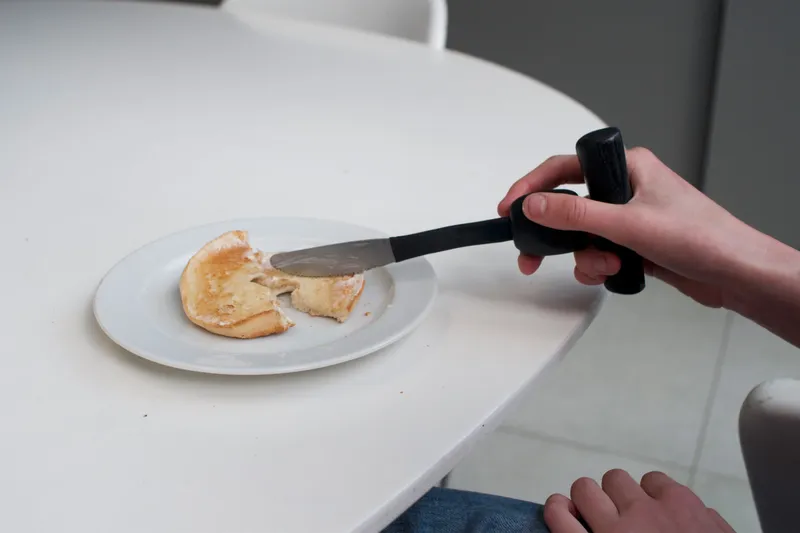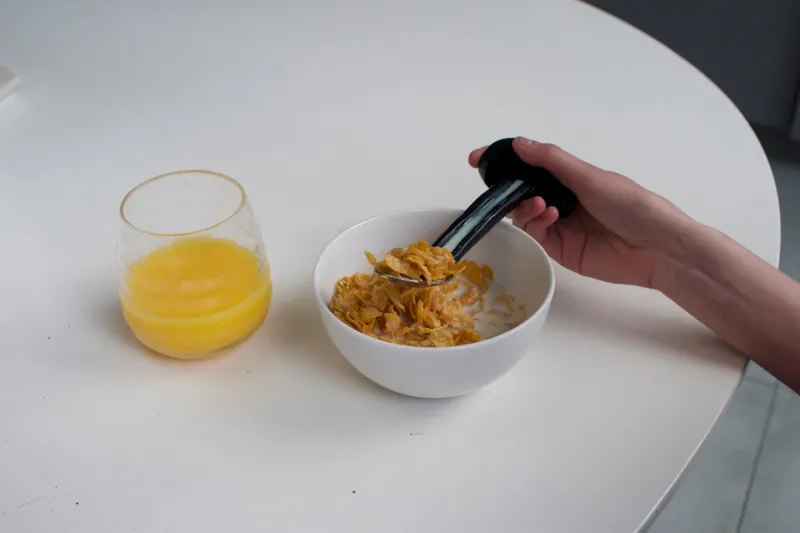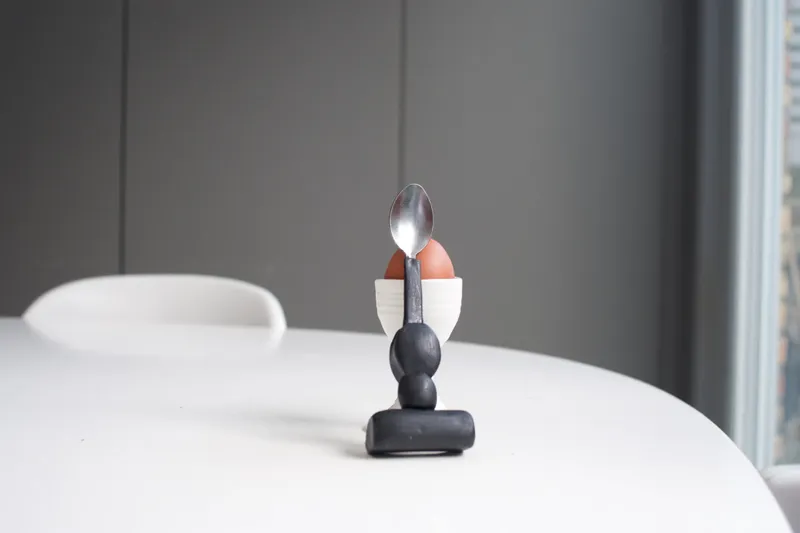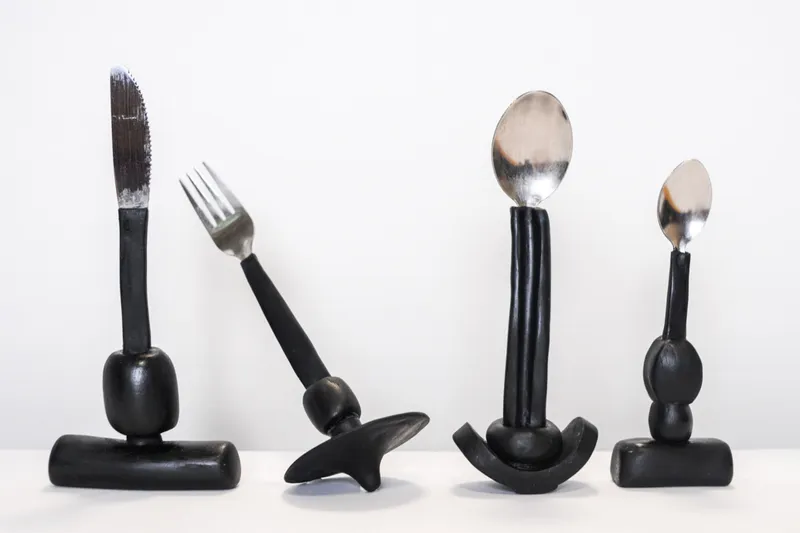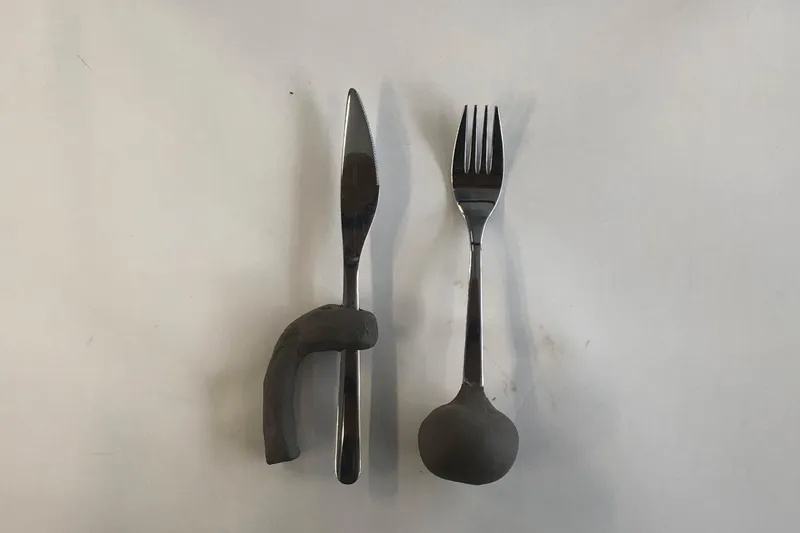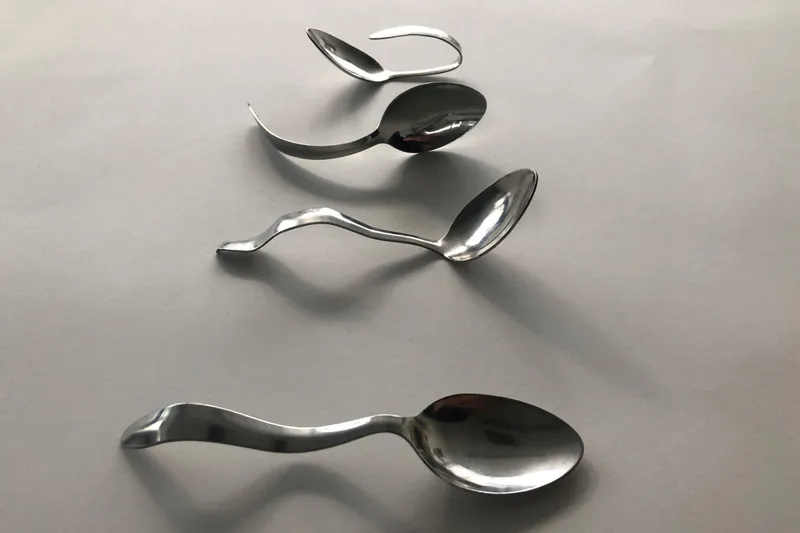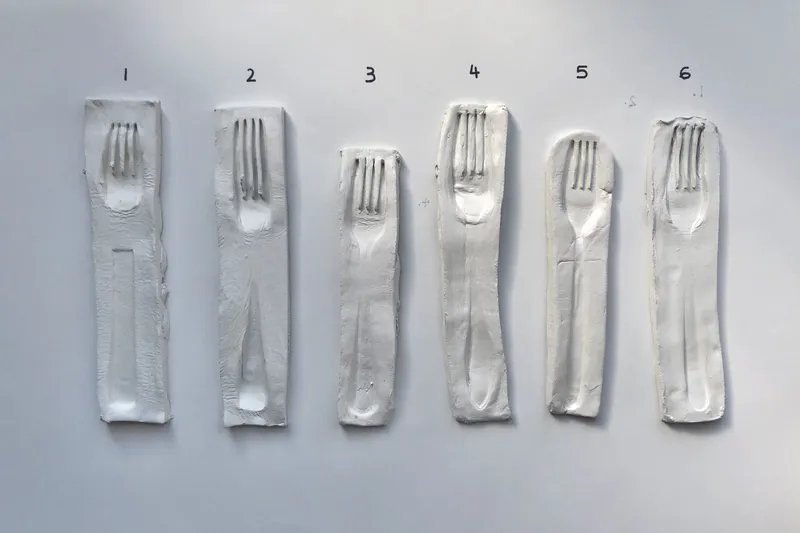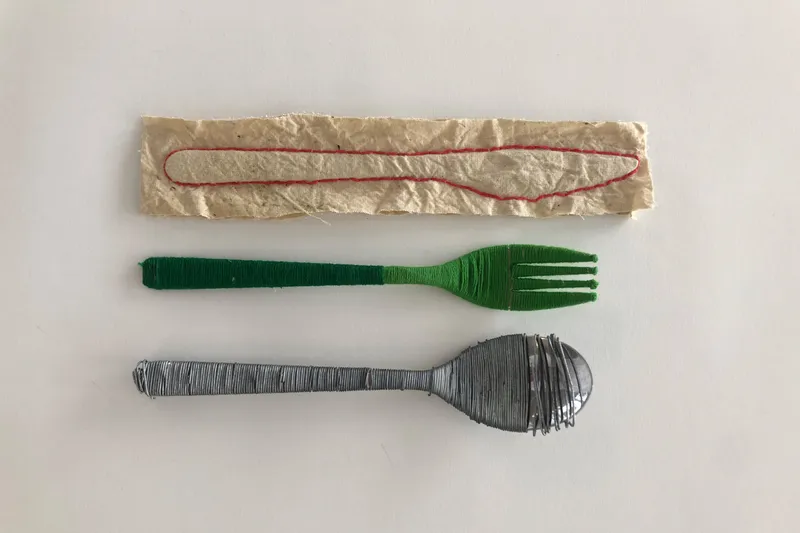My project, titled ‘Making Acquaintances,’ questions the theme of familiarity through observations of our relationship with everyday objects. Familiarity emulates feelings of comfort and safety but can also be mundane. Is familiarity a good thing? Through my research, I found that your feelings towards everyday objects are so dependent on what the object is and the meaning behind it. For example, a mug and cutlery fall into the same category, kitchenware and are used every day. However, you generally appreciate and care for a mug more. Why? Throughout my project, I have questioned the way we view cutlery as we are so reliant on them in our daily lives yet they are overlooked. I think that being familiar with an object is good for the user but bad for the object as it leads to them being ignored and mistreated. My outcome is a comment on this observation. I designed a set of four pieces of cutlery, a knife, fork, tablespoon and teaspoon, made from black FIMO, a polymer clay. I intended to make the cutlery feel special by enhancing what they are most proud of and fight for the attention of the user. The knife is designed to enhance the interaction by forcing the user to hold it at the base, like a saw, exaggerating the movement of cutting something back and forth. What is unique about a fork is that you spin it around when eating spaghetti. Therefore, it sits on a spinning top to reflect this behaviour. A tablespoon is often used at breakfast time, for cereal, and is the first piece of cutlery you use in the day. So, it rocks back and forth and has a central channel for cereal milk. Finally, the teaspoon is the smallest piece of cutlery and is overpowered by the others. I changed this by elongating its handle to be the same height as a tablespoon. As a collection, they stand upright to sit on the kitchen counter on display. This characteristic removes the cutlery draw to avoid being overlooked and forgotten.

